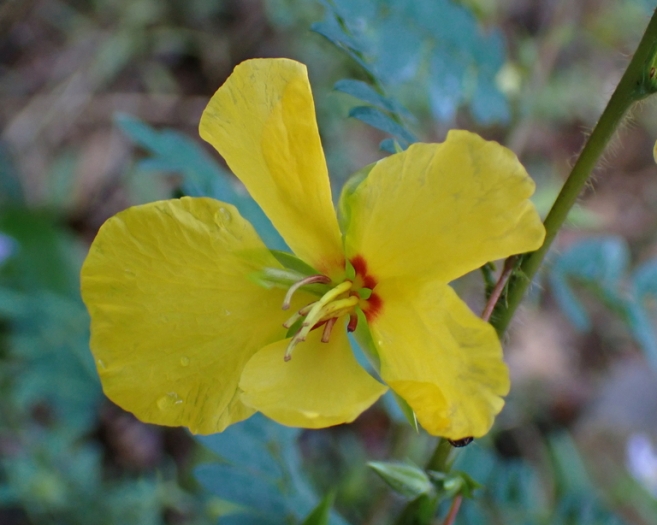Partridge Pea
(Chamaecrista fasciculata)
Partridge Pea (Chamaecrista fasciculata)
/
/

Cole Shoemaker
CC BY 4.0



















































Estimated Native Range
Summary
The Partridge Pea is valued for its ability to quickly colonize disturbed sites, making it useful for erosion control and habitat restoration. Its vibrant flowers and ease of growth also make it a popular choice for wildflower gardens, meadows, and as a cover crop in agricultural settings. It thrives in full sun and is adaptable to a range of soil types, though it prefers well-drained soils. While it requires medium amounts of water, it is somewhat drought-tolerant once established. Gardeners should note that while the plant is not typically prone to diseases, it can self-seed aggressively in optimal conditions.CC BY-SA 4.0
Plant Description
- Plant Type: Herb
- Height: 1-3 feet
- Width: 1-3 feet
- Growth Rate: Rapid
- Flower Color: Yellow
- Flowering Season: Summer
- Leaf Retention:
Growth Requirements
- Sun: Full Sun
- Water: Medium
- Drainage: Fast, Medium
Common Uses
Bank Stabilization, Bee Garden, Bird Garden, Butterfly Garden, Drought Tolerant, Erosion Control, Low Maintenance, Salt Tolerant, Showy Flowers, Street Planting
Natural Habitat
Native to prairies, open woodlands, and fields throughout the Eastern and Central United States
Other Names
Common Names: Golden Cassia, Sensitive Plant, Showy Partridge-Pea, Prairie-Senna, Partridge-Pea, Prairie Senna, Sensitive Pea, Showy Partridge Pea, Sleepingplant, Sleeping Plant, Locust Weed
Scientific Names: , Chamaecrista fasciculata, Cassia fasciculata, Cassia chamaecrista, Chamaecrista fasciculata var. macrosperma, Cassia brachiata, Cassia fasciculata var. robusta, Chamaecrista fasciculata var. robusta, Chamaecrista brachiata, Chamaecrista camporum
GBIF Accepted Name: Chamaecrista fasciculata (Michx.) Greene